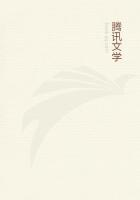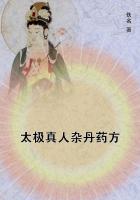But if number is finite, how far does it go? With regard to this not only the fact but the reason should be stated. But if number goes only up to 10 as some say, firstly the Forms will soon run short;e.g. if 3 is man-himself, what number will be the horse-itself? The series of the numbers which are the several things-themselves goes up to 10. It must, then, be one of the numbers within these limits;for it is these that are substances and Ideas. Yet they will run short; for the various forms of animal will outnumber them. At the same time it is clear that if in this way the 3 is man-himself, the other 3's are so also (for those in identical numbers are similar), so that there will be an infinite number of men; if each 3 is an Idea, each of the numbers will be man-himself, and if not, they will at least be men. And if the smaller number is part of the greater (being number of such a sort that the units in the same number are associable), then if the 4-itself is an Idea of something, e.g. of 'horse' or of 'white', man will be a part of horse, if man is It is paradoxical also that there should be an Idea of 10 but not of 11, nor of the succeeding numbers. Again, there both are and come to be certain things of which there are no Forms; why, then, are there not Forms of them also? We infer that the Forms are not causes. Again, it is paradoxical-if the number series up to 10 is more of a real thing and a Form than 10 itself. There is no generation of the former as one thing, and there is of the latter. But they try to work on the assumption that the series of numbers up to 10 is a complete series. At least they generate the derivatives-e.g. the void, proportion, the odd, and the others of this kind-within the decade.
For some things, e.g. movement and rest, good and bad, they assign to the originative principles, and the others to the numbers. This is why they identify the odd with 1; for if the odd implied 3 how would 5 be odd? Again, spatial magnitudes and all such things are explained without going beyond a definite number; e.g. the first, the indivisible, line, then the 2 &c.; these entities also extend only up to 10.
Again, if number can exist separately, one might ask which is prior- 1, or 3 or 2? Inasmuch as the number is composite, 1 is prior, but inasmuch as the universal and the form is prior, the number is prior; for each of the units is part of the number as its matter, and the number acts as form. And in a sense the right angle is prior to the acute, because it is determinate and in virtue of its definition; but in a sense the acute is prior, because it is a part and the right angle is divided into acute angles. As matter, then, the acute angle and the element and the unit are prior, but in respect of the form and of the substance as expressed in the definition, the right angle, and the whole consisting of the matter and the form, are prior; for the concrete thing is nearer to the form and to what is expressed in the definition, though in generation it is later. How then is 1 the starting-point? Because it is not divisiable, they say; but both the universal, and the particular or the element, are indivisible. But they are starting-points in different ways, one in definition and the other in time. In which way, then, is 1 the starting-point? As has been said, the right angle is thought to be prior to the acute, and the acute to the right, and each is one.
Accordingly they make 1 the starting-point in both ways. But this is impossible. For the universal is one as form or substance, while the element is one as a part or as matter. For each of the two is in a sense one-in truth each of the two units exists potentially (at least if the number is a unity and not like a heap, i.e. if different numbers consist of differentiated units, as they say), but not in complete reality; and the cause of the error they fell into is that they were conducting their inquiry at the same time from the standpoint of mathematics and from that of universal definitions, so that (1) from the former standpoint they treated unity, their first principle, as a point; for the unit is a point without position.
They put things together out of the smallest parts, as some others also have done. Therefore the unit becomes the matter of numbers and at the same time prior to 2; and again posterior, 2 being treated as a whole, a unity, and a form. But (2) because they were seeking the universal they treated the unity which can be predicated of a number, as in this sense also a part of the number. But these characteristics cannot belong at the same time to the same thing.
If the 1-itself must be unitary (for it differs in nothing from other 1's except that it is the starting-point), and the 2 is divisible but the unit is not, the unit must be liker the 1-itself than the 2 is. But if the unit is liker it, it must be liker to the unit than to the 2; therefore each of the units in 2 must be prior to the 2. But they deny this; at least they generate the 2 first.
Again, if the 2-itself is a unity and the 3-itself is one also, both form a 2. From what, then, is this 2 produced?
9
Since there is not contact in numbers, but succession, viz.
between the units between which there is nothing, e.g. between those in 2 or in 3 one might ask whether these succeed the 1-itself or not, and whether, of the terms that succeed it, 2 or either of the units in 2 is prior.
Similar difficulties occur with regard to the classes of things posterior to number,-the line, the plane, and the solid. For some construct these out of the species of the 'great and small'; e.g.
lines from the 'long and short', planes from the 'broad and narrow', masses from the 'deep and shallow'; which are species of the 'great and small'. And the originative principle of such things which answers to the 1 different thinkers describe in different ways, And in these also the impossibilities, the fictions, and the contradictions of all probability are seen to be innumerable. For (i) geometrical classes are severed from one another, unless the principles of these are implied in one another in such a way that the 'broad and narrow'















